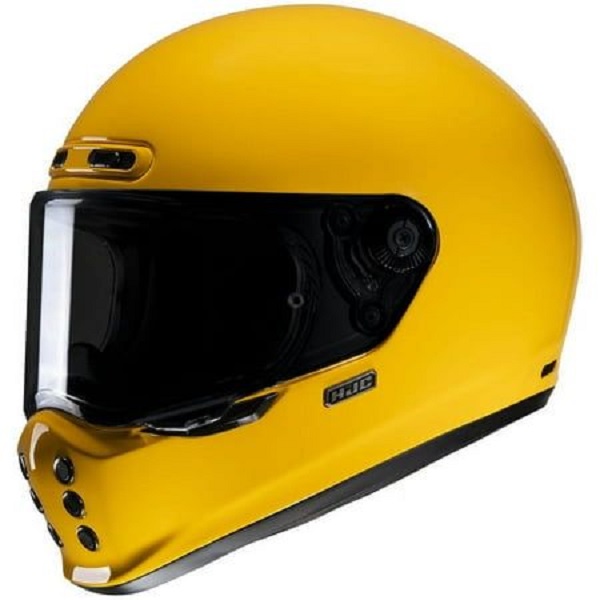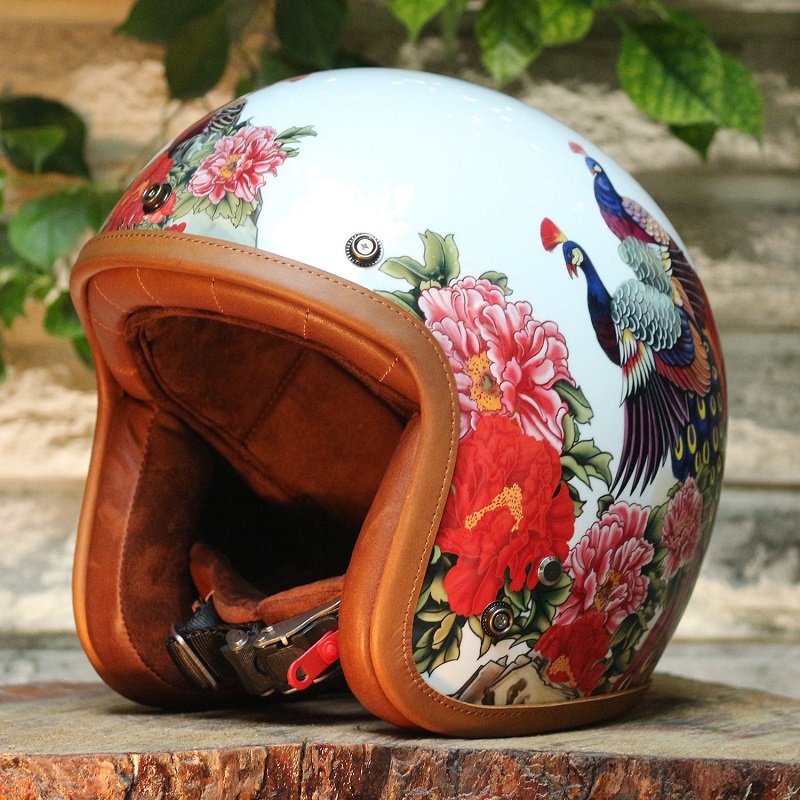Dec 13, 2024
Revamp Your Ride: How to Paint Motorcycle Helmet
When it comes to personalizing your ride, painting your motorcycle helmet can be one of the most satisfying expressions of your individuality. A custom-painted helmet not only enhances your aesthetic but also helps your helmet stand out while providing an essential safety function. However, painting a motorcycle helmet is not just about aesthetics; it also involves a process that ensures both the durability and legality of your design. So, how to paint motorcycle helmet effectively? This guide will delve into the comprehensive steps, tips, and techniques to ensure you achieve the best results while maintaining the integrity of your helmet.
Introduction to Helmet Customization
Helmet customization is not just about aesthetics; it’s an expression of personal style and safety consciousness. Riders often see their helmets as an extension of their personality, and with the right customization, a helmet can stand out in a crowd and reflect the rider’s individuality. As we embark on the process of painting motorcycle helmets, it’s important to recognize that it isn’t just a fun DIY project; it’s also about enhancing your visibility and showing off your creativity on the road.
Painting your helmet does more than give it a new look. It can breathe new life into an old helmet, provide a sense of pride in your ride, and even increase your helmet’s resale value. Customizing a motorcycle helmet involves selecting the right materials, having a clear vision of the design, and executing the painting process with precision. Each step, from preparing the helmet surface to applying the final clear coat, is pivotal for achieving a professional and lasting finish. In this guide, we will walk you through each stage of helmet customization, ensuring that by the end, you have a helmet that not only looks great but also meets safety standards.
Whether you’re planning to add simple accents or create an elaborate design, painting your motorcycle helmet can be a rewarding project. It’s a chance to make a statement and turn an essential safety gear into a piece of art. So, gear up, choose your paints, and get ready to transform your helmet into a masterpiece that showcases your unique style.
Preparing Your Helmet for Painting

Proper preparation is crucial for a helmet’s paint job to look sleek and last long.
Cleaning and Detachment of Accessories
Start by removing all helmet accessories, including the visor, padding, and any attached electronics. Clean the helmet’s surface with an all-purpose cleaner or grease remover to eliminate dirt and oils. This step ensures that the paint adheres properly. It is essential to wear gloves during this process to avoid leaving smudges or fingerprints.
Sanding for a Smooth Base
Once clean, sanding the helmet creates a smooth base for painting. Use wet sandpaper, starting with a coarser grit and moving to finer grits for a polished finish. This helps in enhancing paint adhesion and achieving a professional appearance. For areas hard to reach by hand, consider using a power sander. Be patient and thorough, as rushing this step could result in a less than perfect final product. Remember, the smoother the base, the better the final paint job will look.
Choosing the Right Paints and Materials
Essential Tools and Materials for Helmet Painting
Before getting started, gather all necessary tools and materials for a successful helmet painting job. These essentials include high-quality spray paint specifically designed for use on plastics and helmets, masking tape, and fine-grit sandpaper. You’ll also need a screwdriver for removing parts, a heat gun or hairdryer to assist with sticker removal, adhesive remover spray, denatured alcohol for cleaning, and a selection of clean rags.
For detailed work, consider acquiring airbrush equipment, flexible stencils, and possibly an electric sander for large or particularly rough surface areas. Whether you plan a simple color refresh or intricate designs, these tools will facilitate a smoother process.
Selecting Colors and Paint Types
Choosing the right colors and paint types is crucial for both the aesthetic and longevity of your helmet’s paint job. Use paints that are compliant with safety standards and suitable for outdoor use, ensuring they can withstand environmental factors like UV rays, rain, and fluctuations in temperature.
When selecting colors, consider visibility on the road – bright colors or reflective paints contribute to safer riding. If you’re aiming for durability and a professional finish, opt for automotive-grade spray paint or paints specifically formulated for use on helmets and plastics.
Plan color combinations carefully to match your style and motorcycle. Using primer as a foundation can enhance the vibrancy of your chosen colors and promote even coverage. Clear coats, preferably Urethane, are recommended for sealing in your design and adding gloss for a final touch of class.
Designing Your Helmet
Designing your motorcycle helmet is an exciting part of customization. This stage allows you to translate your personal style and creativity into a unique visual statement on your safety gear. It involves planning your design carefully and preparing for the application of the paint. Let’s dive into the essential steps for designing your motorcycle helmet effectively.
Planning and Sketching Your Design
Start your design process by brainstorming ideas that resonate with your personality and aesthetic preferences. Consider themes such as your favorite colors, symbols that have personal significance, or patterns that appeal to you. Using sketch pads or digital drawing software, sketch out your concepts. This step helps visualize the final look and make adjustments before you start painting.
Remember, the helmet’s curved surface can be challenging to work with. Practicing on spherical objects like balls can give you a feel for the contours. Try out various layouts and see how they adapt to the curved shape. This practice ensures your design is not only beautiful but also practical to implement on an actual helmet.
Transfer and Masking Techniques
Once your design is finalized on paper or digitally, the next step is to transfer it onto the helmet. You can use graphite paper for tracing or create custom stencils if your design is intricate. This precision ensures that your artwork aligns correctly with the helmet’s surface.
Masking plays a crucial role in achieving neat, sharp edges and protecting areas you don’t want to paint. Use quality painters’ tape to outline your design and cover sections of the helmet that will remain paint-free. Take your time with this step to prevent paint from bleeding under the tape, which could mar your design.
With your design meticulously planned and transferred, you’re ready to embark on the actual painting process. The satisfactory result will not only enhance your helmet’s look but also boost your excitement every time you hit the road.
Step-by-Step Painting Guide

Transforming your motorcycle helmet with paint is a thrilling project. The following guide provides a step-by-step approach to help you apply your design effectively.
Applying the Base Coat
Start by applying a base coat to your helmet. Choose a high-quality spray paint that adheres well to plastic. Hold the can about 7-10 inches away and spray in steady passes to avoid drips. Apply thin layers and give enough drying time between coats. A good base coat ensures that subsequent layers of paint adhere better and provide a solid color foundation.
Ensure the painting area is well-ventilated. Wear a mask to prevent inhalation of fumes. The base coat might need several applications, depending on the color depth desired. Allow the helmet to dry completely after the final base coat application before moving to detailing.
Detailing with Graphics and Artwork
After the base coat is dry, you can add graphics and artwork. Use stencils for precision if you’re not confident in freehand work. Apply painter’s tape carefully to create clean lines and designs. If using multiple colors, plan the order of application to prevent color mixing.
Patience is key when adding details. Apply each color carefully and allow ample drying time before adding the next. Remember that less is often more; don’t overcrowd your helmet with graphics. Focus on a clean, sharp finish for a professional look. Once completed, remove the tape slowly to unveil your design.
By following these steps, your helmet will soon showcase a unique and customized appearance that reflects your personal style. Next, we’ll cover how to seal and protect your new helmet design.
Finishing Touches
Completing your helmet’s paint job involves protective measures and reassembly. Here’s how to finalize your project.
Sealing with Clear Coat for Protection
Apply a clear coat to seal and protect your paintwork. Use urethane for a glossy finish and durability. Spray on multiple thin layers, allowing each to dry before the next. This clear barrier guards against weather and road debris, keeping colors vibrant.
Reassembling Helmet Parts
Once the clear coat is dry, reattach parts like visors and padding. Handle your helmet with care to avoid smudges on the freshly sealed surface. Reinstall any electronics, like Bluetooth speakers, with precision. Now, your newly painted helmet is not only a personal statement but also road-ready and safe.
Maintenance and Care for Your Custom Helmet

Once you’ve customized your motorcycle helmet, it’s important to maintain its appearance and integrity. Regular care will keep your helmet looking fresh and ensure it remains safe for use. Follow these simple steps to take care of your custom-painted helmet:
Routine Cleaning
Clean your helmet gently but thoroughly. Use mild soap and water to wipe away dirt and grime. Avoid harsh chemicals that could damage the paint or helmet material. Make sure to clean the visor with products designed for that purpose to avoid scratches.
Proper Storage
Store your helmet in a cool, dry place away from direct sunlight when not in use. Sunlight can fade the paint over time. Use a helmet bag to protect it from dust and scratches.
Handling with Care
Be mindful when handling your helmet. Rough treatment can cause chips and damage to the paintwork. When you’re not wearing it, place it on a stable surface to prevent falls.
Regular Inspection
Check your helmet for any signs of wear or damage. Look for cracks, scratches, or any other imperfections that may compromise the helmet’s protective qualities.
Touch-Ups
If the paint gets chipped or scratched, you may need to do touch-ups. Keep some of your paint on hand for minor repairs. Apply carefully to maintain the original design.
By following these maintenance steps, your custom-painted motorcycle helmet will continue to look great and provide essential protection while you ride. Remember that a helmet’s primary role is safety, so never compromise on the quality of care.
More Details